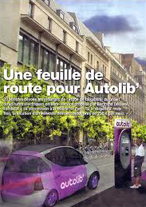Eco-cars and Shared Offices: New Concepts that will Impact Architecture

There seemed to be no connection between the two headlines. One read:“Own a Car? How Passé.” The other: “Can’t Afford an Office? Rent a Desk for $275.” Apples, oranges and architecture?
The stories:
News 1: Paris launched an electric car-sharing plan in the same vein of its successful 20,000 shared bikes, available at hundreds of bike stations. By 2013 there will be 3,000 – 5,000 eco-friendly electric cars stationed at more than 1,000 locations across the city.
News 2. Shared offices are becoming “IN.” For $275 per month you can get an available desk ($450 for a permanent one and $600 or more for a closed-door private space.) Conference rooms, small phone booths for private talks and some professional services are commonly available. One startup company has linked on line 2,300 spaces in 500 cities and 60 countries.
Imagine: It is 7:30 AM. John, Jane and little Jimmy and Julie had finished having breakfast. John is leaving for work in his scheduled shared-bike. Jane leaves a few minutes later with the kids on the scheduled eco-car. They walk one block to pick it up.
“Bye mommy,” say the kids when Jane drops them at their school.
“Bye sweeties,” says Jane.
She drives a couple of miles, drops the car at the station and climbs to her shared office space. She loves it. She meets a lot of people from other companies. It is good for business and it is great for making new friends.
What are these stories have to do with architecture? Think of it:
Concept #1: The layout of streets in most cities has been the consequence of the car’s proliferation during the last 100 years. Car accessibility and parking had become top priority at the expense of pedestrians’ life quality and safety. The consequences are well-known: oceans of asphalt, parking regulations conditioning how we live and car accidents being “a part of life.”
If mobility would become less dependent on private cars, how would it impact architecture? How many streets could be converted into pedestrian areas? How many billions of dollars spent in parking uses could be redirected to architectural design quality? How much personal expenditures in gas, insurance and devaluation would be saved? How many lives could be spared?
Concept #2. The office building has also been conceived about 130 years ago, long before computers and smart phones changed our working modes. In a century there has been more change in their packaging than in their contents.
If 25% of the population would work from home and 50% of the office spaces would be shared, how would life quality change? How many billions could be diverted from office buildings to other productive activities?
Needed, urgently: serious rethinking in planning, urban design and architecture. Help!
 Architecture Awareness
Architecture Awareness

